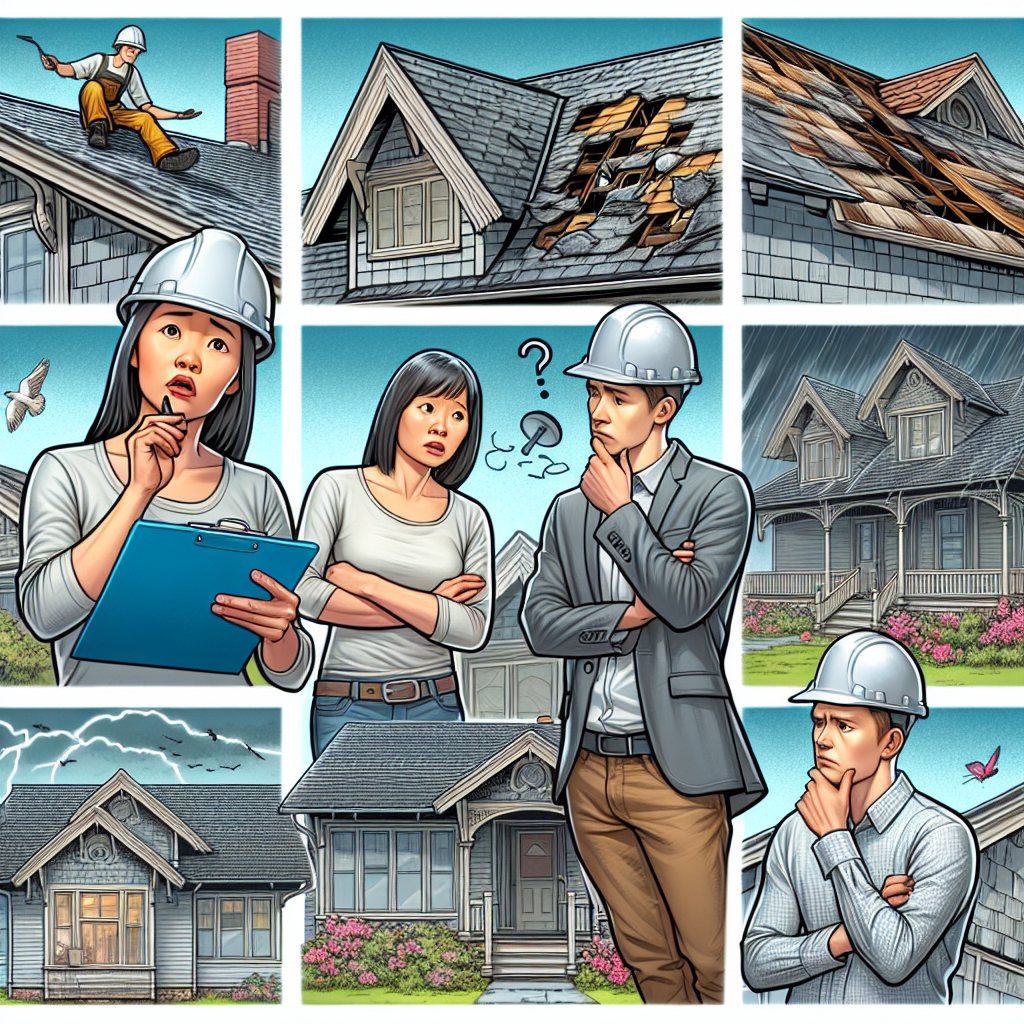“Protecting Your Home, One Roof at a Time”
During the process of purchasing a home, it is essential to conduct a thorough inspection to identify any potential issues or safety concerns. One crucial aspect that often demands close attention is the condition of the roof. A comprehensive home inspection report not only evaluates its overall quality and durability but also reveals any safety concerns associated with it. This article will highlight some of the common roof safety concerns uncovered in home inspection reports, emphasizing their importance in ensuring a secure living environment for homeowners.
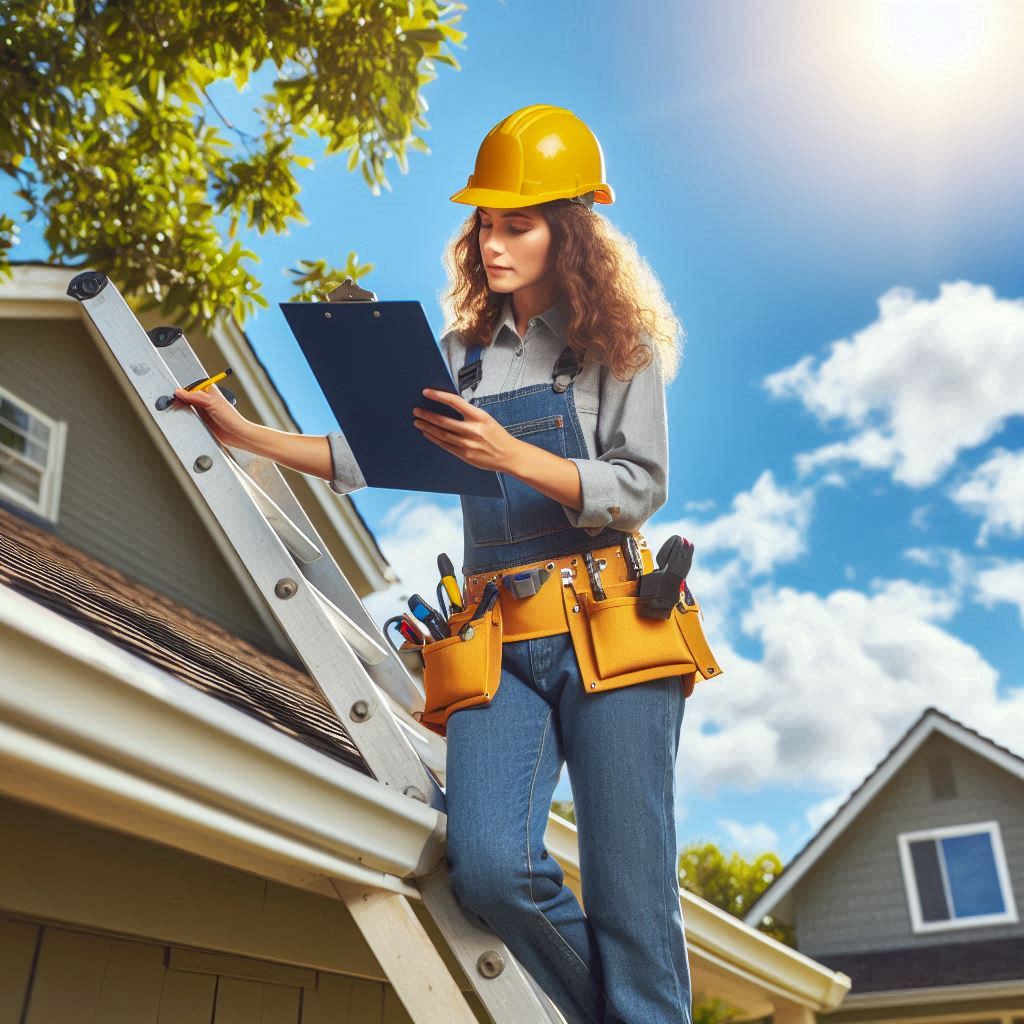
Common Roof Safety Hazards Identified in Home Inspection Reports
Home inspections are an essential part of the home buying process, providing potential homeowners with valuable information about the condition of a property. One critical aspect that is thoroughly examined during these inspections is the roof. The roof serves as a protective shield for the entire house, and any issues related to its safety can have serious consequences.
One common hazard identified in home inspection reports is improper installation or damaged roofing materials. When installed incorrectly, roofs become vulnerable to leaks and structural damage. Improperly secured shingles may easily blow off during strong winds, leaving sections of the roof exposed to moisture and further deterioration. Moreover, damaged roofing materials such as cracked or missing tiles can compromise both aesthetic appeal and functionality.
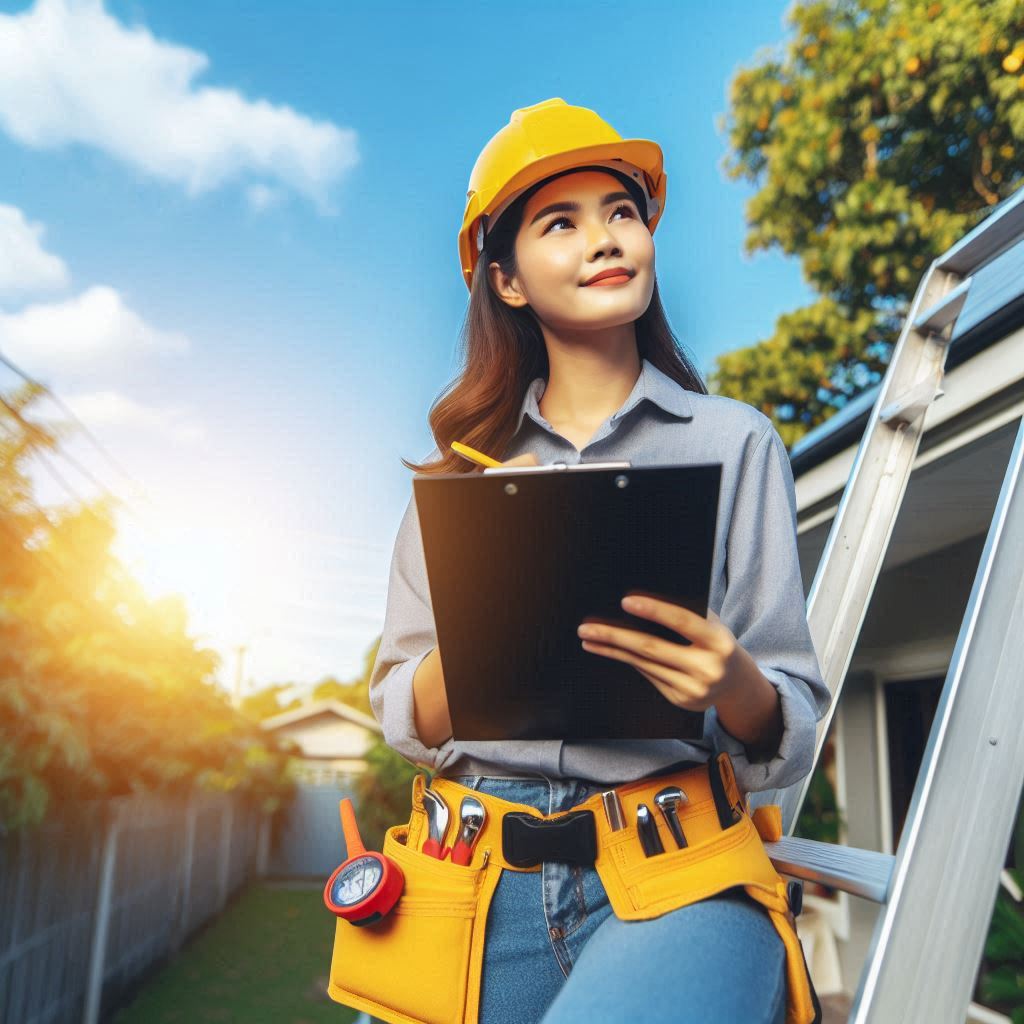
Another significant concern noted in home inspection reports relates to inadequate ventilation systems within attics or other enclosed spaces beneath roofs. Proper ventilation is crucial for preventing heat buildup and moisture accumulation, which can lead to mold growth or even compromise the integrity of the entire roof structure. Inadequate airflow also increases energy costs by causing excessive heat transfer into living spaces during summer months.
Additionally, many homes exhibit signs of poor maintenance regarding their gutters and downspouts – another common finding highlighted in home inspection reports. Gutters play a vital role in diverting rainwater away from rooftops and foundations; however, when clogged with debris such as leaves or twigs, they fail to perform this function effectively. This results in water overflowing onto siding or pooling near foundation walls, increasing the risk of water intrusion into basements or crawlspaces.
Furthermore, one must not overlook concerns surrounding rooftop accessibility found within these inspection reports—particularly when it comes to steep-slope roofs lacking proper safety measures such as handrails or walkways for maintenance personnel’s convenience. Climbing onto elevated surfaces without necessary precautions poses severe risks for accidents leading to injury or even fatality.
It is worth noting that all these identified hazards are not only safety concerns but also potential financial burdens for homeowners. Damaged or improperly installed roofing materials may lead to expensive repairs or, in extreme cases, necessitate a complete roof replacement. Inadequate ventilation systems can result in higher energy bills and persistent moisture-related issues that may require extensive remediation efforts.
To mitigate these risks, prospective buyers should pay close attention to the roof inspection portion of their home inspections and address any noted deficiencies before making a purchase decision. It is crucial to hire reputable contractors with experience in roofing installations and repairs who adhere to industry standards.
For existing homeowners, regular maintenance is key to preventing these common safety hazards from arising. Regularly inspecting the roof for signs of damage or wear, such as loose shingles or cracked tiles, allows for timely interventions before minor issues escalate into more significant problems. Ensuring proper ventilation within attics by installing vents and periodically cleaning gutters will further protect against long-term complications.
In conclusion, home inspection reports provide valuable insights into potential safety concerns regarding the roof—a vital component of any dwelling. Identifying hazards related to improper installation or damaged materials alongside inadequate ventilation systems and faulty gutter maintenance highlights the importance of addressing these issues promptly. By prioritizing proactive measures such as professional inspections, appropriate maintenance routines, and prompt repairs when needed, homeowners can safeguard themselves from unnecessary risks while enjoying peace of mind under a safe and secure rooftop environment
Importance of Addressing Roof Safety Concerns for Homeowners
When it comes to home maintenance, the roof is often overlooked. However, neglecting this crucial aspect of your property can have serious consequences. A recent home inspection report has revealed some alarming safety concerns related to roofs, highlighting the importance of addressing these issues promptly.
The roof is an integral part of any home, providing protection against external elements such as rain, snow, and extreme temperatures. It plays a vital role in maintaining structural integrity and ensuring the safety and well-being of occupants. Therefore, it is imperative for homeowners to prioritize regular inspections and necessary repairs to prevent potential hazards.
One of the most common issues identified in the inspection report was deteriorating shingles. Over time, exposure to harsh weather conditions can cause shingles to become brittle and crack or break off entirely. This not only compromises the aesthetic appeal of your home but also exposes it to water damage. Water infiltration through damaged shingles can lead to rotting wood structures beneath the roof surface and even result in mold growth within your living space.
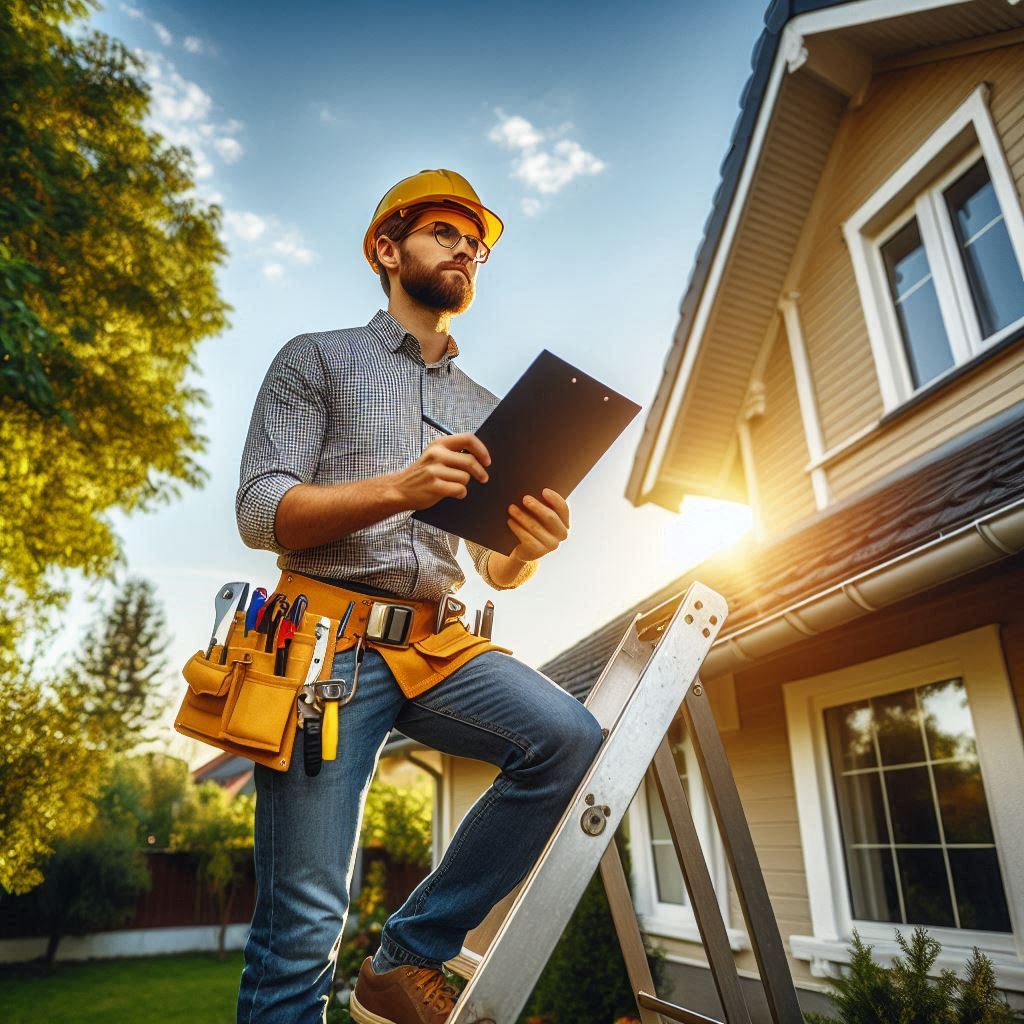
In addition to deteriorating shingles, another significant concern highlighted by the inspection report was sagging roofs. Sagging occurs when there is a structural problem with either the roofing materials or supporting beams beneath them. It could be due to excessive weight from accumulated snow or debris on top of the roof or weakened supports that cannot bear its load adequately.
Sagging roofs are particularly dangerous as they pose an imminent risk of collapsing completely if left unaddressed for too long. This puts not only your family’s safety at stake but also jeopardizes your investment as repairing extensive damage caused by a collapsed roof can be financially burdensome.
Furthermore, poor attic ventilation emerged as another major issue mentioned in several sections of the inspection report. Inadequate airflow within an attic space results in high levels of humidity buildup which contributes significantly towards various problems including moisture accumulation leading again mold growth under the roof. Additionally, poor ventilation can cause excessive heat buildup within the attic during summer months, causing premature aging of roofing materials and increased energy consumption for cooling purposes.
Properly addressing these safety concerns starts with scheduling regular inspections conducted by certified professionals. Homeowners should consult reputable roofing contractors who possess the knowledge and expertise to assess potential hazards and provide appropriate solutions. These experts will thoroughly examine your roof, identify any existing issues or weaknesses, and recommend necessary repairs or maintenance tasks.
Moreover, homeowners must also understand that prevention is key when it comes to maintaining a safe roof. Regular cleaning of gutters, removal of debris from the rooftop, and trimming overhanging branches are simple yet effective measures in preventing damage caused by water accumulation or falling objects during storms.
In conclusion, neglecting roof safety concerns can have serious implications for homeowners. The recent home inspection report underscores the need for prompt action in addressing deteriorating shingles, sagging roofs, and poor attic ventilation. By prioritizing regular inspections conducted by certified professionals and implementing preventive maintenance measures such as gutter cleaning and tree trimming, homeowners can ensure their property remains safe and secure while protecting their investment in their homes. Remember – your roof’s condition directly impacts your family’s well-being – don’t wait until it’s too late!
Preventive Measures to Ensure Roof Safety and Minimize Risks
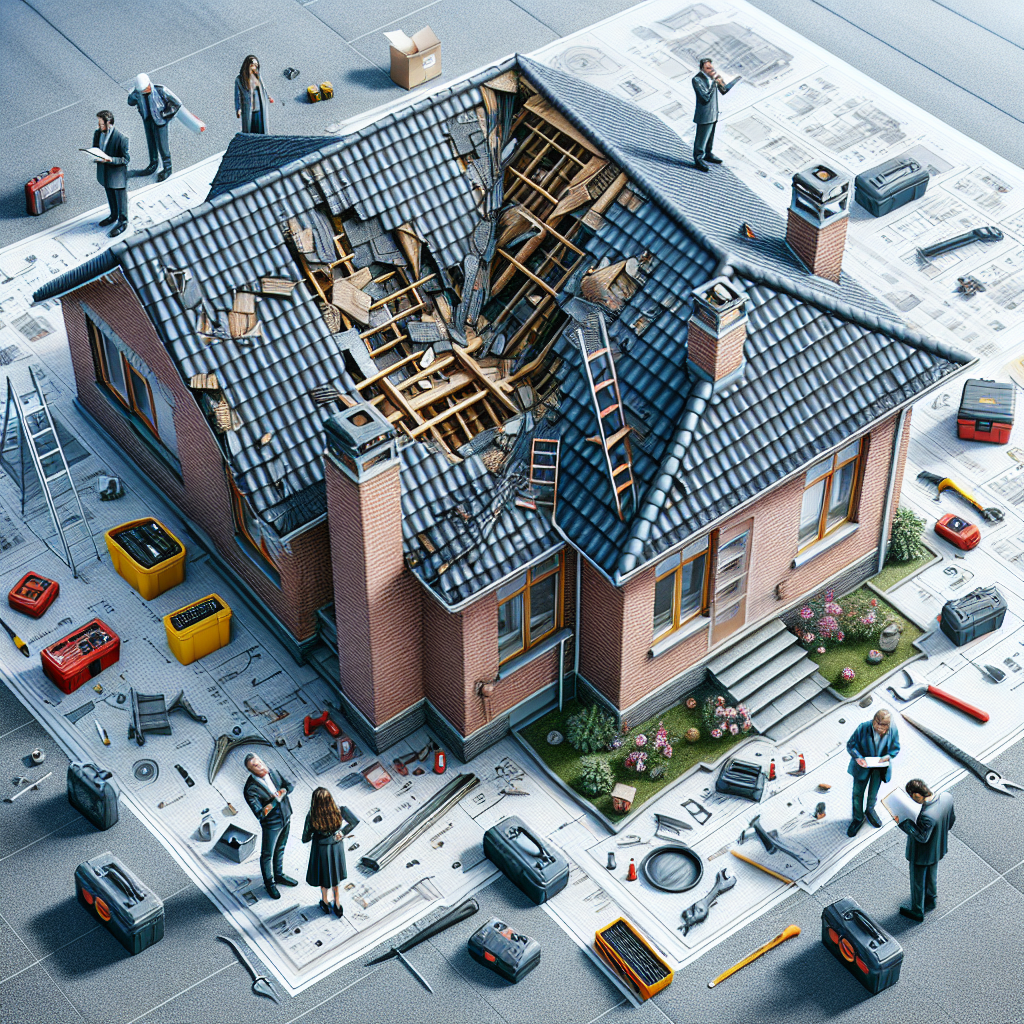
When it comes to ensuring the safety of your home, one area that should never be overlooked is the roof. A properly maintained and secure roof is crucial for protecting your property from weather elements and providing structural integrity. Unfortunately, many homeowners are unaware of potential risks associated with a compromised roof until it’s too late. This article aims to shed light on preventive measures that can help ensure roof safety and minimize risks.
Firstly, regular inspections by qualified professionals are essential in identifying any existing or potential issues with your roof. These inspections should be conducted at least once a year, but more frequent checks may be necessary depending on factors such as climate conditions and age of the roof. During these inspections, professionals will thoroughly examine all aspects of your roof, including shingles/tiles, flashing, gutters/downspouts, vents/stacks, and skylights.
One common issue that often goes unnoticed until significant damage occurs is water infiltration through the roofing system. Water leaks can lead to serious consequences such as mold growth or even structural damage if left unaddressed. To prevent this from happening, regular maintenance of the roofing system is vital. This includes inspecting for missing or damaged shingles/tiles and repairing them promptly; ensuring proper sealing around chimneys and other protrusions; clearing debris from gutters/downspouts regularly; and checking for signs of moisture or leaks inside the attic space.
In addition to routine maintenance practices, implementing preventive measures can go a long way in enhancing overall roof safety. One effective measure is installing gutter guards which act as barriers against debris accumulation in gutters while still allowing water flow freely away from the house during rainfall events. Gutter guards not only reduce clogging but also minimize the risk of overflowing gutters causing water seepage into walls or foundation.
Furthermore, reinforcing weak areas on roofs prone to high winds or heavy snow loads is crucial in minimizing potential risks. This can be achieved by installing additional supports such as braces or straps, particularly on older roofs or those located in regions with extreme weather conditions. By strengthening these vulnerable areas, the risk of structural damage or even collapse during severe storms is significantly reduced.
Another important aspect of roof safety is ensuring proper attic ventilation. Adequate ventilation allows for air circulation and prevents moisture buildup that could potentially damage insulation or create a breeding ground for mold growth. Inadequate ventilation not only compromises the integrity of your roof but also affects energy efficiency within your home. Installing vents and fans can help ensure proper airflow, reducing both roof-related issues and energy consumption.
Lastly, it’s crucial to prioritize regular professional inspections after any significant weather events such as hurricanes or heavy snowstorms. These events often result in substantial stress on roofs, increasing the likelihood of damage that may not be immediately apparent to homeowners. By promptly addressing any post-event damages through expert assessments, repairs can be initiated before further deterioration occurs.
In conclusion, safeguarding the integrity and safety of your roof should never be taken lightly. Regular inspections by professionals, routine maintenance practices like clearing debris from gutters and repairing damaged shingles/tiles promptly are fundamental preventive measures to ensure a secure roofing system. Additionally, installing gutter guards to prevent clogs and reinforcing weak areas prone to high winds are effective ways to minimize risks associated with compromised roofs. Proper attic ventilation plays a vital role in maintaining overall roof health while professional inspections after severe weather events are essential for immediate repair actions if needed. By implementing these preventive measures consistently, homeowners can have peace of mind knowing they’ve taken necessary steps towards securing their homes from potential roofing disasters
How to Choose a Reliable Contractor for Roof Repairs and Improvements
Roof safety concerns can be a serious issue for homeowners, as they not only pose a risk to the inhabitants of the home but can also lead to significant damage and costly repairs. When such concerns are uncovered in a home inspection report, it becomes crucial to find a reliable contractor who can address these issues effectively and efficiently.
Choosing the right contractor for roof repairs and improvements is not an easy task, especially when safety is at stake. Homeowners should prioritize finding someone with experience and expertise in dealing with roofing systems. A qualified contractor will possess the necessary knowledge and skills to identify potential safety hazards and take appropriate measures to ensure that the work is done safely.
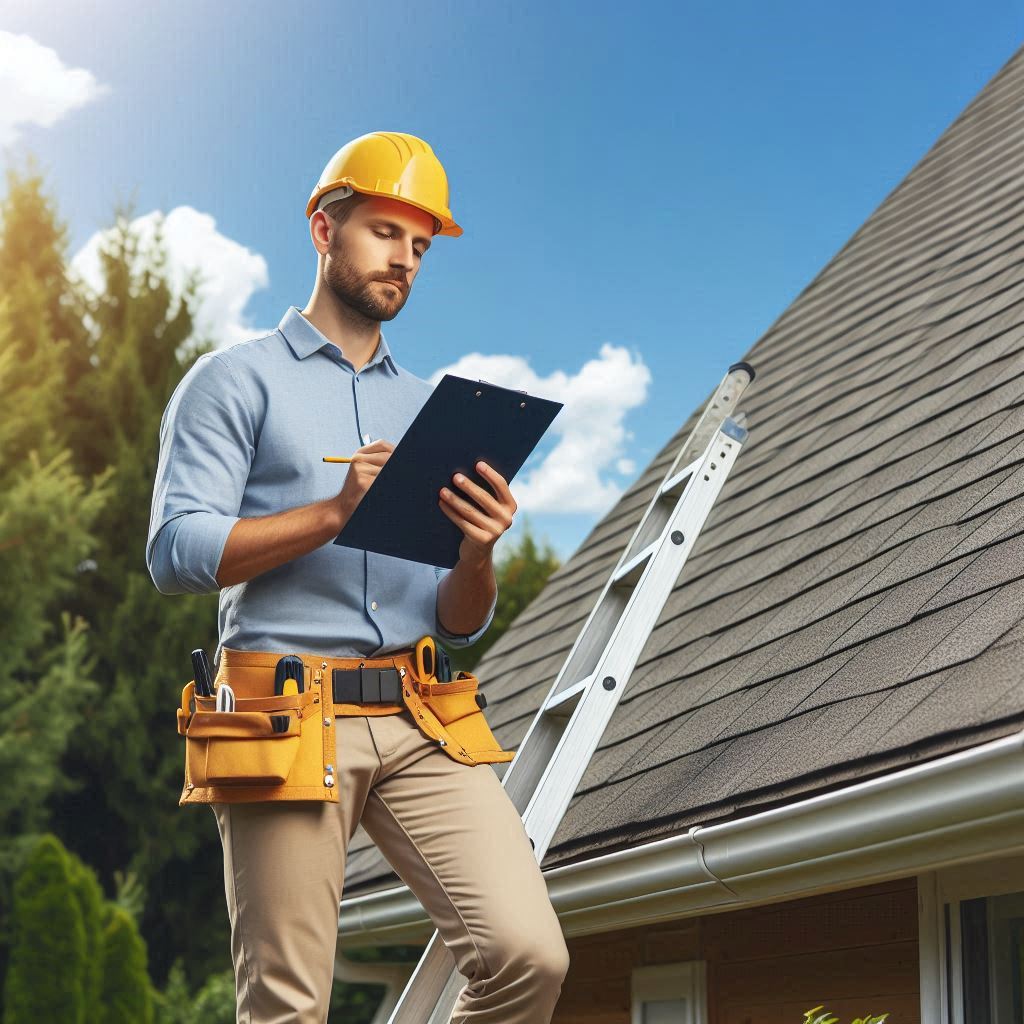
One way to gauge a contractor’s reliability is by checking their credentials. Look for professionals who are licensed, insured, and bonded. These certifications indicate that the contractor has met certain standards set by industry organizations or regulatory bodies. By hiring someone with proper accreditation, homeowners can have peace of mind knowing that their roof repair or improvement project will be handled by qualified individuals who adhere to professional guidelines.
In addition to credentials, it is essential to consider a contractor’s reputation within the community. Seek recommendations from friends, family members, or neighbors who have had similar work done on their roofs before. Online reviews and testimonials can also provide valuable insights into past clients’ experiences with different contractors. Look for patterns of positive feedback regarding professionalism, quality of workmanship, adherence to schedules, and overall customer satisfaction.
When evaluating contractors’ proposals or estimates for your specific roofing needs—such as repairing leaks or replacing damaged shingles—pay attention not only to pricing but also other important factors such as warranties offered on materials used and labor performed. Reputable contractors usually stand behind their workmanship by offering comprehensive guarantees against defects or failures resulting from faulty installation practices.
Another consideration in choosing a reliable contractor involves ensuring they follow proper safety protocols during all stages of the project – from initial inspections through completion of repairs or improvements. A reliable contractor should have a comprehensive safety program in place that includes measures to protect their workers, homeowners, and surrounding property. This could involve using safety equipment such as harnesses and fall protection systems, ensuring proper training for all personnel involved in the project, and adhering to Occupational Safety and Health Administration (OSHA) guidelines.
Furthermore, a reliable contractor should be able to provide references from past clients who can vouch for their commitment to safety on the job site. Speaking with these references will give homeowners a better understanding of how the contractor operates and whether they prioritize safety throughout their projects.
In conclusion, when faced with roof safety concerns uncovered in a home inspection report, it is crucial to choose a reliable contractor for repairs or improvements. Homeowners should prioritize qualifications such as licensing, insurance coverage, and bonding when selecting a professional. They should also consider reputation within the community through recommendations or online reviews while evaluating proposals based not only on pricing but also warranties offered on materials used and labor performed. Finally, ensure that the chosen contractor follows proper safety protocols by having comprehensive safety programs in place and providing references who can attest to their commitment to maintaining safe working conditions at all times.
Potential Legal Liabilities Related to Ignoring Roof Safety Concerns
When it comes to home safety, few things are as important as the condition of the roof. A solid and secure roof not only protects homeowners from the elements but also ensures their overall well-being. That’s why it is crucial for potential buyers and current homeowners to pay close attention to any roof safety concerns identified in a home inspection report.
Ignoring these concerns can lead to severe legal liabilities that may have far-reaching consequences. Therefore, it is essential for individuals to understand the potential legal ramifications associated with neglecting roof safety issues.
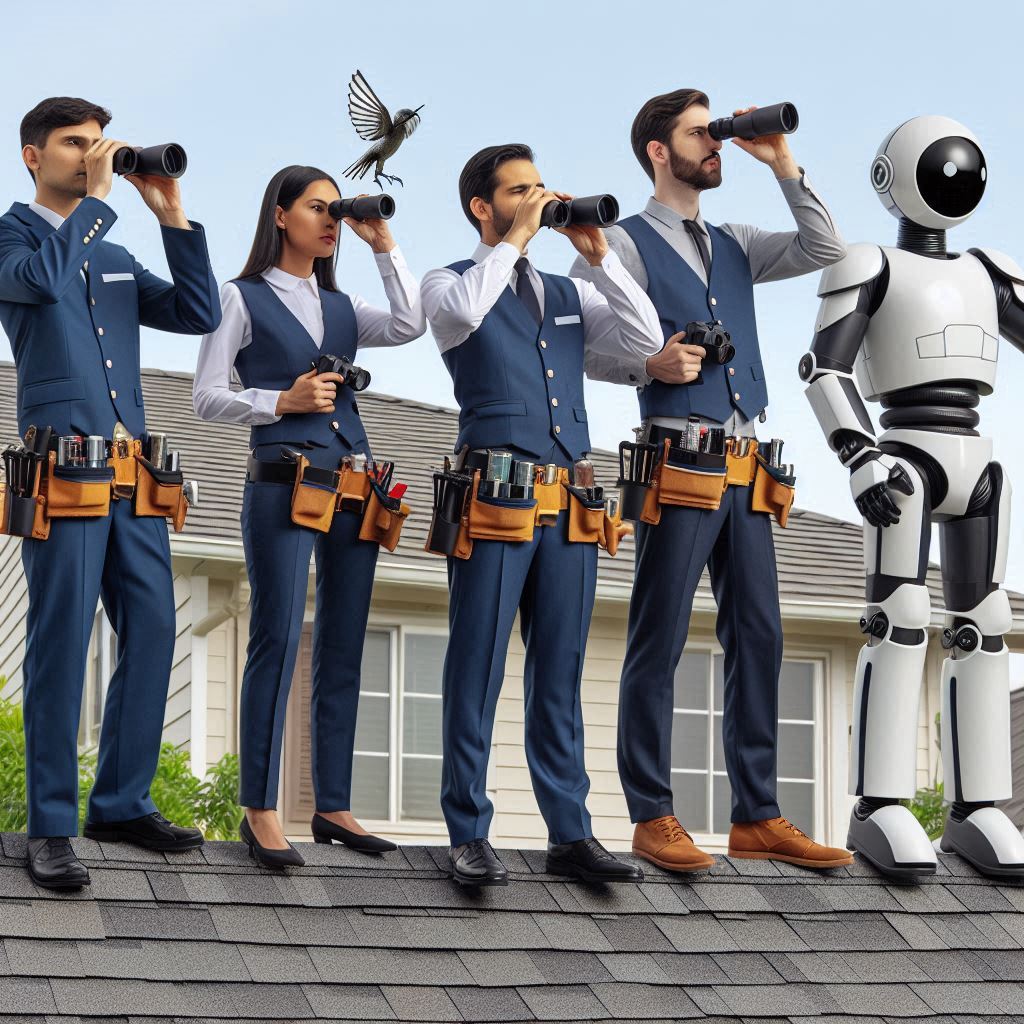
First and foremost, failing to address roof safety concerns can result in serious injuries or even fatalities. A weakened or damaged roof poses a significant risk of collapse, especially during extreme weather conditions such as heavy rainstorms or snowstorms. Should an accident occur due to a neglected roof, legal actions could be taken against the homeowner for negligence.
Furthermore, ignoring roof safety concerns can give rise to premises liability claims. Premises liability refers to the legal responsibility of property owners for accidents or injuries that occur on their premises. In this context, if someone gets injured due to a faulty or unsafe roofing system, they may hold the homeowner liable for damages resulting from medical expenses, pain and suffering, lost wages, or even disability.
It is worth noting that insurance companies typically deny coverage when injuries are caused by known hazards that were not properly addressed by homeowners. This means that those who ignore identified roofing problems might find themselves without insurance protection should an incident arise.
In addition to personal injury claims, neglecting roof safety concerns may also expose homeowners to financial losses related to property damage. Leaking roofs can cause extensive damage not only directly on top of buildings but also throughout other areas of homes – walls get saturated with water leading eventually onto mold growth; insulation becomes ineffective which impacts energy efficiency; furniture and other possessions get ruined by water infiltration – all culminating into expensive repairs and potential loss of property value.
Moreover, the lack of proper roof maintenance and repair can be considered a breach of contractual obligations. When homeowners sell their properties, they are often required to disclose any known defects or issues that might affect the integrity or safety of the home. Failure to do so may lead to lawsuits from buyers claiming misrepresentation or fraudulent concealment.
It is essential for homeowners to understand that not only do roof safety concerns pose immediate risks but also have long-term consequences. By neglecting these issues, individuals run the risk of being held legally responsible for damages caused by accidents on their property, incurring substantial financial burdens, and potentially damaging their reputation as sellers.
In conclusion, addressing roof safety concerns identified in a home inspection report is paramount. Neglecting these matters can result in severe legal liabilities including personal injury claims, premises liability lawsuits, denial of insurance coverage, property damage costs, and potential breaches of contract. Homeowners should prioritize maintaining a secure and safe roofing system to protect themselves from unnecessary legal disputes and financial losses.
The Role of Insurance Coverage in Dealing with Roof Safety Issues
The roof is an integral part of any home, providing protection from the elements and ensuring the structural integrity of the building. However, over time, roofs can develop safety issues that need to be addressed promptly. These concerns can range from minor repairs to major structural problems that require extensive renovations.
One way homeowners can deal with these roof safety issues is by relying on their insurance coverage. Insurance policies often include provisions for property damage caused by natural disasters or accidents. This coverage extends to roof repairs and replacements when necessary.
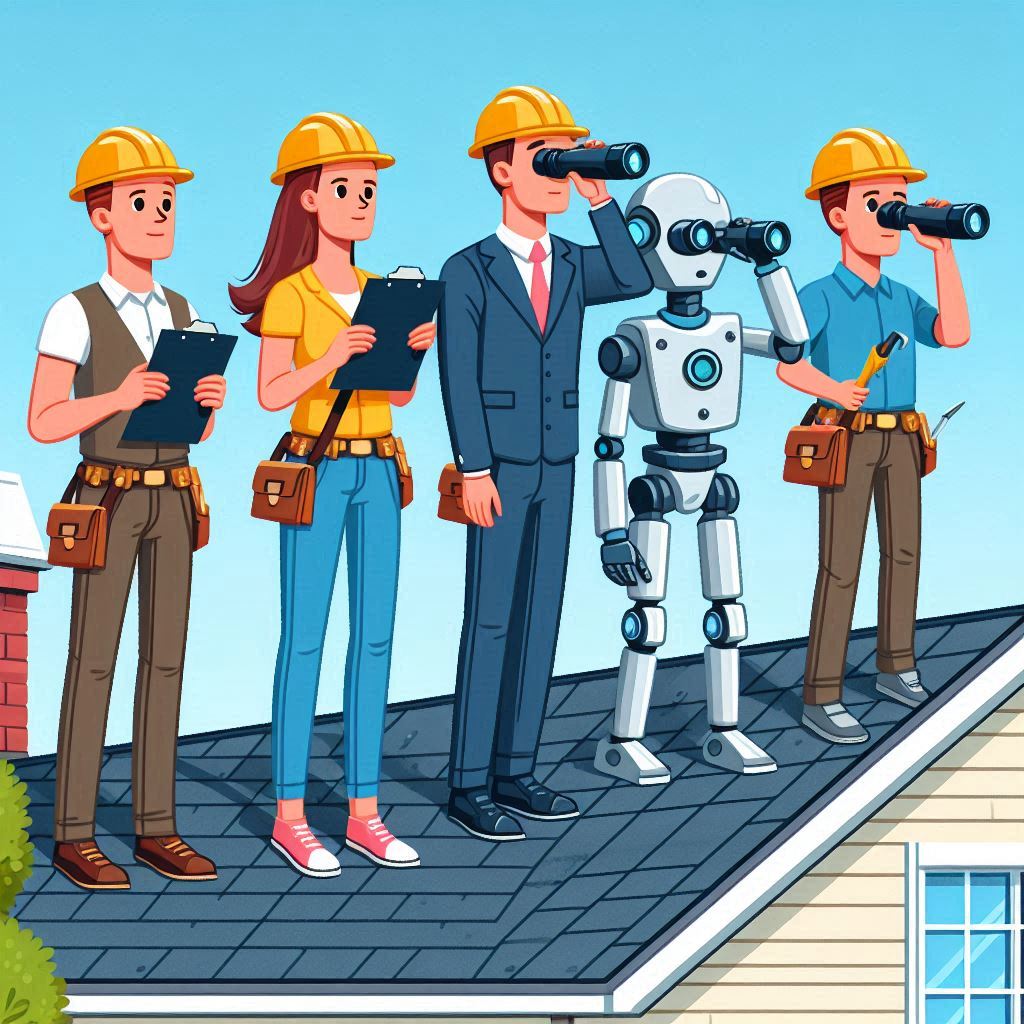
When a home inspection report uncovers roof safety concerns, it is important for homeowners to review their insurance policy carefully. They should determine whether their coverage includes specific clauses related to roof repairs and replacements due to safety issues. Some policies may limit coverage for certain types of damage or exclude pre-existing conditions, so it’s crucial to understand what is covered before filing a claim.
In some cases, insurance providers may require additional documentation or evidence of the roofing issue before approving a claim. This could involve submitting photographs of the damaged area or obtaining quotes from licensed contractors detailing the cost of repair work. It is essential for homeowners to follow these requirements precisely and provide all requested information promptly to ensure a smooth claims process.
Once a claim has been approved, homeowners must also consider deductibles and policy limits set by their insurance provider. Deductibles are out-of-pocket expenses that policyholders are responsible for paying before insurance benefits kick in. Policy limits refer to the maximum amount an insurer will pay for covered damages.
If the cost of repairing or replacing a roof exceeds the deductible or policy limit, homeowners may have options available through supplemental coverage such as umbrella policies or endorsements specifically designed for higher-valued homes.
In addition to reviewing insurance coverage options, it’s important for homeowners facing roof safety concerns identified in an inspection report to consult with qualified professionals such as roofing contractors or engineers specializing in structural assessments. These experts can provide guidance on the severity of the issue and recommend appropriate repair or replacement strategies.
Working with experienced professionals also ensures that any repairs are done in compliance with local building codes and regulations. Insurance companies may require proof that repairs were completed by licensed contractors to ensure the safety of the property.
In some cases, homeowners may need to explore financing options if insurance coverage is insufficient or unavailable for addressing roof safety concerns. Personal savings, home equity loans, or lines of credit could be viable alternatives for funding necessary repairs.
To prevent future roof safety issues, homeowners should consider regular maintenance as part of their overall home care routine. Periodic inspections by qualified professionals can identify potential problems early on and allow for timely repairs before they escalate into larger issues.
In conclusion, insurance coverage plays a crucial role in dealing with roof safety concerns uncovered in a home inspection report. Homeowners must carefully review their policies to understand what is covered and follow all procedures required by their insurance provider when filing claims. Consulting with roofing professionals and considering financing options if needed will help ensure that necessary repairs are addressed promptly. Ultimately, proactive maintenance is key to preventing future roof safety concerns from arising in the first place.In conclusion, the home inspection report has revealed significant roof safety concerns. These issues should be addressed promptly to ensure the safety and structural integrity of the property. Failure to address these concerns could potentially lead to further damage and pose a risk to occupants. It is highly recommended that a professional roofer be consulted for a thorough assessment and appropriate repairs or replacements as needed.
